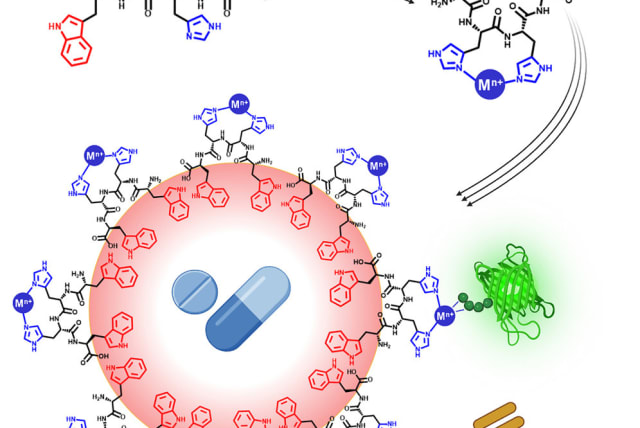This multifunctional system can send drugs where they can be effective in body’s tissues, organs

Drug delivery is a broad field of research that involves the development of new carrier systems and materials for effective therapeutic conveyance.
Researchers at the Hebrew University of Jerusalem (HU) have now introduced a new drug-delivery system that uses switchable peptide-stabilized emulsions, allowing for the simultaneous transport of both water-soluble and water-insoluble compounds in one carrier.
The scientists said, overcoming previous obstacles, that this advancement has the potential to revolutionize drug delivery, offering enhanced treatment efficacy with minimized side effects. Prof. Meital Reches, her doctoral student Daniel Boas, and their colleagues pioneered the groundbreaking drug delivery system.
They have just published their findings in the journal Cell Press, titled “A multifunctional drug delivery system based on switchable peptide-stabilized emulsions.”
Scientists and companies develop new drugs constantly, but for them to be useful, they must reach the organs and tissues that need to be treated. Drug delivery is a broad field of research that involves the development of new carrier systems and materials for effective therapeutic conveyance.
Drug delivery can be controlled, steady, or targeted. Since the introduction of medical application systems, many medications have been administered through various conventional drug-delivery dosage forms, including injectables, pills, lotions, immediate-release capsules, mixtures, creams, pastes, ointments, powders, suppositories, suspensions, and more, to treat various diseases.
More recently, new devices with greatly improved therapeutic potential include oral controlled release systems, fast-dispersing dosage forms, liposomes, taste-masking systems, transdermal patches, aerosols, and site-specific delivery systems have been introduced.
Traditionally, emulsions have served as reliable carriers for drug delivery, but their efficacy was hindered by the inability to encapsulate both types of drugs within the same vehicle. The HU team tackled this challenge by devising a short peptide – a short chain of only four amino acids – that was capable of stabilizing emulsions and accommodating both hydrophilic and hydrophobic compounds.
The heart of this innovation lies in the peptide’s remarkable ability to alter its shape upon binding specific metal ions, transforming from hydrophilic to amphiphilic. This molecular metamorphosis not only stabilizes emulsions containing water-insoluble drugs but also speeds the delivery of water-soluble metal ions attached to the peptide. In simpler terms, the peptide can adjust its form when it binds to certain metal ions, allowing it to adhere to both water and fat, thereby maintaining the stability of the drug mixture. Additionally, it can transport metal ions that dissolve in water.
Understanding the ropes
To understand the workings of these emulsions, the researchers used sophisticated techniques such as nuclear magnetic resonance spectroscopy (NMR) and molecular dynamics. Their investigations revealed that the stability of these emulsions stems from bonds between histidine and metal that can be reversible under low pH conditions, such as those found in tumor cells, thereby releasing drugs precisely where needed.
Early trials involving paclitaxel-loaded emulsions have yielded encouraging results, demonstrating significant efficacy against cancer cells. Moreover, this versatile system offers more than just drug delivery – it can be tailored with various features, opening up avenues for novel applications and benefits.
Reches commented on the significance of their breakthrough that “our multifunctional drug delivery system opens up new avenues for synergistic therapy by enabling the simultaneous delivery of diverse therapeutic agents within a single carrier. This has the potential to significantly enhance the efficacy of treatments while minimizing side effects.”
Jerusalem Post Store
`; document.getElementById("linkPremium").innerHTML = cont; var divWithLink = document.getElementById("premium-link"); if (divWithLink !== null && divWithLink !== 'undefined') { divWithLink.style.border = "solid 1px #cb0f3e"; divWithLink.style.textAlign = "center"; divWithLink.style.marginBottom = "15px"; divWithLink.style.marginTop = "15px"; divWithLink.style.width = "100%"; divWithLink.style.backgroundColor = "#122952"; divWithLink.style.color = "#ffffff"; divWithLink.style.lineHeight = "1.5"; } } (function (v, i) { });

